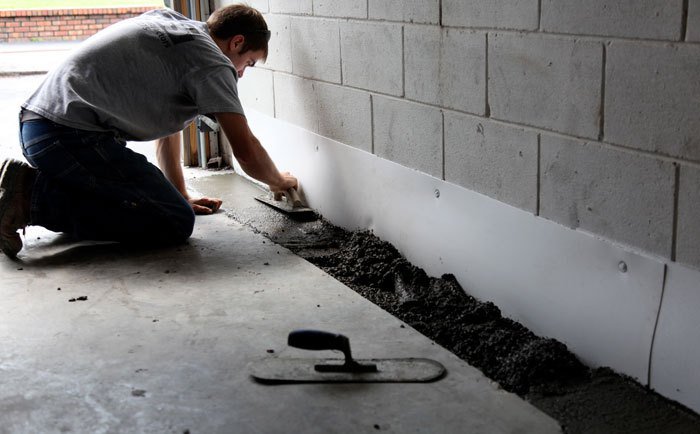Maintaining Your Foundation: The Critical Role of Basement Waterproofing
Introduction to Basement Waterproofing
Water, the source of life, can paradoxically be a fundamental threat to our homes. Basement waterproofing is the crucial barrier between the ever-present dangers of water damage and the sanctity of our living spaces. In regions susceptible to heavy rainfall or high water tables, homes can be vulnerable to the encroachment of moisture—a formidable adversary capable of undermining the foundation upon which a home stands. Ignoring the call to protect against water damage isn’t just a folly. Given time, it can lead to catastrophic structural failures, costly repairs, and even health risks as mold and mildew proliferate. Especially in states like New Jersey, with its diverse weather patterns and wide-ranging soil types, the importance of basement waterproofing in New Jersey cannot be overemphasized—making it an essential part of prudent homeownership.
Common Causes of Basement Water Problems
Water infiltration can begin as a minor, easily overlooked issue. The origins are often natural—cracks formed through the settling of foundations or the constant pressure of groundwater looming outside. These innocuous-looking rifts are anything but harmless, serving as conduits for moisture that stealthily invades basements. As water perpetually seeks the path of least resistance, even the smallest openings can yield its persistence. Landscaping that fails to channel water away from the home properly, ineffective gutter systems, and the natural slope of the surrounding terrain can culminate in a silent siege upon the house. As water accumulates, the hydrostatic pressure against basement walls increases, compelling homeowners to take notice, often when it’s too late. Recognition and early intervention are crucial to staving off an otherwise relentless adversary.
Signs You Need Basement Waterproofing
When the telltale signs of water infiltration manifest, immediate action becomes imperative. A subtle mustiness in the air, a puff of mildew, cracks snaking across walls or flooring, or a sudden onset of unexplained allergies heralding the lingering presence of unwelcome moisture. While inconvenient, these symptoms are precursors to more severe structural damage and health risks. Iron bacteria, with its distinctive teardrop stains, is another lesser-known yet equally significant sign of moisture problems. The resulting iron ochre clogs drains and further exacerbates the water issues, perpetuating an unhealthy cycle of moisture and decay. At this stage, the silence of the seldom-visited basement is broken, crying out for immediate and effective waterproofing interventions.
Techniques of Basement Waterproofing
In basement waterproofing, techniques are tailored to tackle how water besieges a home. Interior methods come to the fore for water leaks that materialize internally, like seeping through basement walls or floors. These include applying sealants, installing sump pumps, or correcting drainage systems from the inside. For external sources of water ingress, often graver in nature, membrane applications or extensive outdoor drainage solutions must be considered. These techniques involve a more significant degree of intervention—digging around foundations and taking steps to repel water at its source. Indeed, prevention or diversion is preferable when practical; directing water away preemptively spares homeowners from facing internal battles against moisture.
The Science Behind Effective Waterproofing Materials
Modern science presents an ever-expanding toolkit for defending homes against moisture. The last few decades have seen tremendous strides in material sciences. The introduction of polymers and advanced sealant technologies have significantly bolstered waterproofing efforts. These new-age materials, capable of repelling water and actively channeling it away from potential entry points, are the frontline warriors in the defense of our basements. Developments such as ‘intelligent’ nano-coatings and super-hydrophobic materials show promise in fending off water with unprecedented efficiency. Applying well-researched, fundamentally sound materials to waterproofing projects has become a hallmark of success in protecting homes from the threat of water damage.
DIY vs. Professional Waterproofing: Pros and Cons
In the digital age, the lure of do-it-yourself solutions tempts many. The appeal of saving on the perceived high costs of professional services drives homeowners to tackle waterproofing projects solo. While some problems might seemingly succumb to DIY fixes, the reality is often more complex. Waterproofing involves:
- Diagnosing the problem.
- Selecting the appropriate method.
- Applying it effectively—trifecta professionals are well-equipped to manage.
The insight of someone who has made a career of studying water patterns, materials, and techniques cannot be underestimated. Any mistakes in the process, no matter how minor, can lead to a false sense of security that may exacerbate the problems one hopes to solve. Turning to professionals often means tapping into a wealth of experience, high-grade materials, and warranties that DIY rarely offers.
Cost and Investment Considerations in Waterproofing
The expense of waterproofing is frequently a concern for many. It may seem steep, but the costs incurred by neglecting necessary waterproofing—or worse, correcting inadequate or failed attempts—are often much higher. Investing in adequately implemented waterproofing solutions can equate to significant savings over time, preventing the need for more drastic measures when problems emerge. Additionally, maintaining a waterproof basement can contribute to a home’s value, presenting a more attractive proposition for future buyers. Thus, in considering the expense, it becomes apparent that waterproofing is less a cost and more an investment, safeguarding not just the present state of a home but its future marketability and structural wellness.
Preparing for Waterproofing: What Homeowners Should Do
Waterproofing is not a task for the unprepared. Before initiating any measures, homeowners should thoroughly assess their situations—minor seepage or a full-blown flood scenario. Engaging with a professional for an inspection can uncover nuanced details that a layperson might miss. Additionally, taking the time to research the waterproofing process, the grade of materials, and the track record of any prospective contractor lays the groundwork for a successful waterproofing undertaking. Proper preparation prevents poor performance—a maxim all the more critical in the context of protecting one’s home.
Future-Proofing Your Home: The Long-Term Value of Waterproofing
Waterproofing is akin to setting a vigilant guard over the longevity and health of a property. The pivot from reactionary fixes to proactive fortification ensures that a home remains sound for the current occupants and generations. It is an elemental component of maintaining a living space and is intrinsically tied to the sustainability and resilience of a dwelling. As society gravitates toward maximizing the utility of every square inch of a home, the role of a basement transforms from mere storage to an active living area. Ensuring these spaces remain dry, comfortable, and liveable becomes imperative in adding value to one’s home, not just financially but as a vital space supporting the myriad activities of daily life.
In conclusion, a home’s foundation is its bedrock; ensuring its integrity is paramount. Waterproofing is an indispensable element in the repertoire of homeownership responsibilities—a protective measure that is both a shield against potentially extreme costs and a catalyst for long-term tranquility. As we take steps to care for our homes, let us not underestimate the silent strength of a dry basement and its profound role in maintaining the essence of our cherished havens.
Keep an eye for more latest news & updates on Usaupmagazine!






